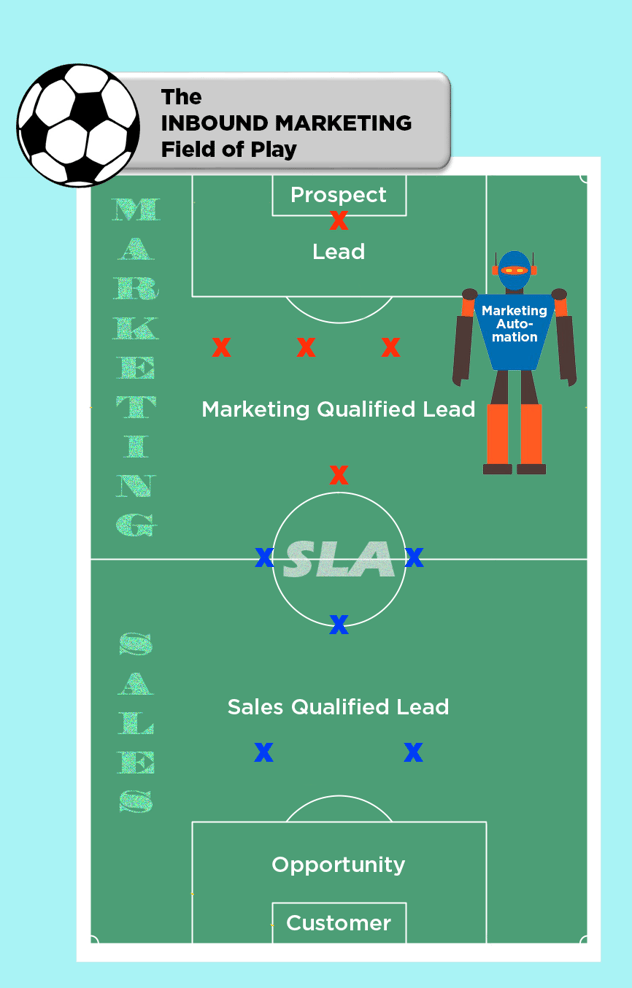
I can remember it so well—sitting in the grass with a bunch of other sweaty 5th and 6th graders, out of breath from running laps and drills. We were the St. Joseph’s soccer team, and we were great at running around and yelling and kicking the ball in the general direction of the other team’s goal. We were pretty good at joking around and drinking the Gatorade, too.
But this practice was a little different. Today, Coach Freer had a big pad of paper and a sharpie. She proceeded to tell us this fabulous story involving fullbacks, and halfbacks, and forwards, and strikers. And those white lines on the grass? She told us what they meant, too.
“Whoa!” I said to myself. “There’s a strategy here, and a structure!”
This memory came back so clear to me this week, as I finished building our latest online course, the Lead Gen What & Why: Inbound. In presenting the top 20 terms related to inbound marketing and lead generation, a real structure, based on strategy, started to come into focus.
Let’s pretend the structure is actually a soccer field. Any prospect that steps onto your field of play—that is, your website—immediately becomes a “lead.” Once that lead takes some sort of action on your website—such as filling out a form or subscribing to your blog—it then becomes a “marketing qualified lead” and should be moved, just like a soccer ball, toward center field.
Your marketing department, shown in red, plays the role of the fullbacks and the halfbacks, who move (or nurture) that lead toward the midfield line and the center circle.

At that point, based on criteria that YOUR team decides, it becomes a "sales qualified lead" and is handed over to the sales department (shown in blue) who are playing the role of the forwards and strikers. They are in charge of further nurturing that lead, through personalized attention, into the area of opportunity and ultimately, the goal.
The Goal
And what’s the goal? To convert that lead into a customer!
Here’s the really cool part. Unlike playing soccer, inbound marketing allows ROBOTS to play too—in the form of automated email workflows and sales enablement tools! Whoa… that means using HubSpot or another marketing automation platform is like sending Optimus Prime in to sub for your entire row of fullbacks!
Huddle Up
Regardless of the brains and the brawn on your team, you are nothing without a plan of attack. In the case of inbound marketing, this means that you huddle up and create a Sales and Marketing Service Level Agreement (SLA). Your team decides the criteria that define each of the sections of your playing field. You decide what the processes and systems will be. What sort of documents will you use? Are your goals aligned? Are you communicating freely across that midfield line?
So if you have dreams of playing in the World Cup, but your team is not even as focused as we were back at old St. Joe’s, maybe what they need is to see that bigger picture, in order to really understand their role, and find their place on the field.
Our newest course, Lead Gen What & Why: Inbound, delves into the 20 most integral terms and processes of inbound marketing. It takes only two to three hours to complete. The course comes with some fantastic printed materials for individual use, and a few sales meeting kits to use with your team.
Good luck and good learning!



